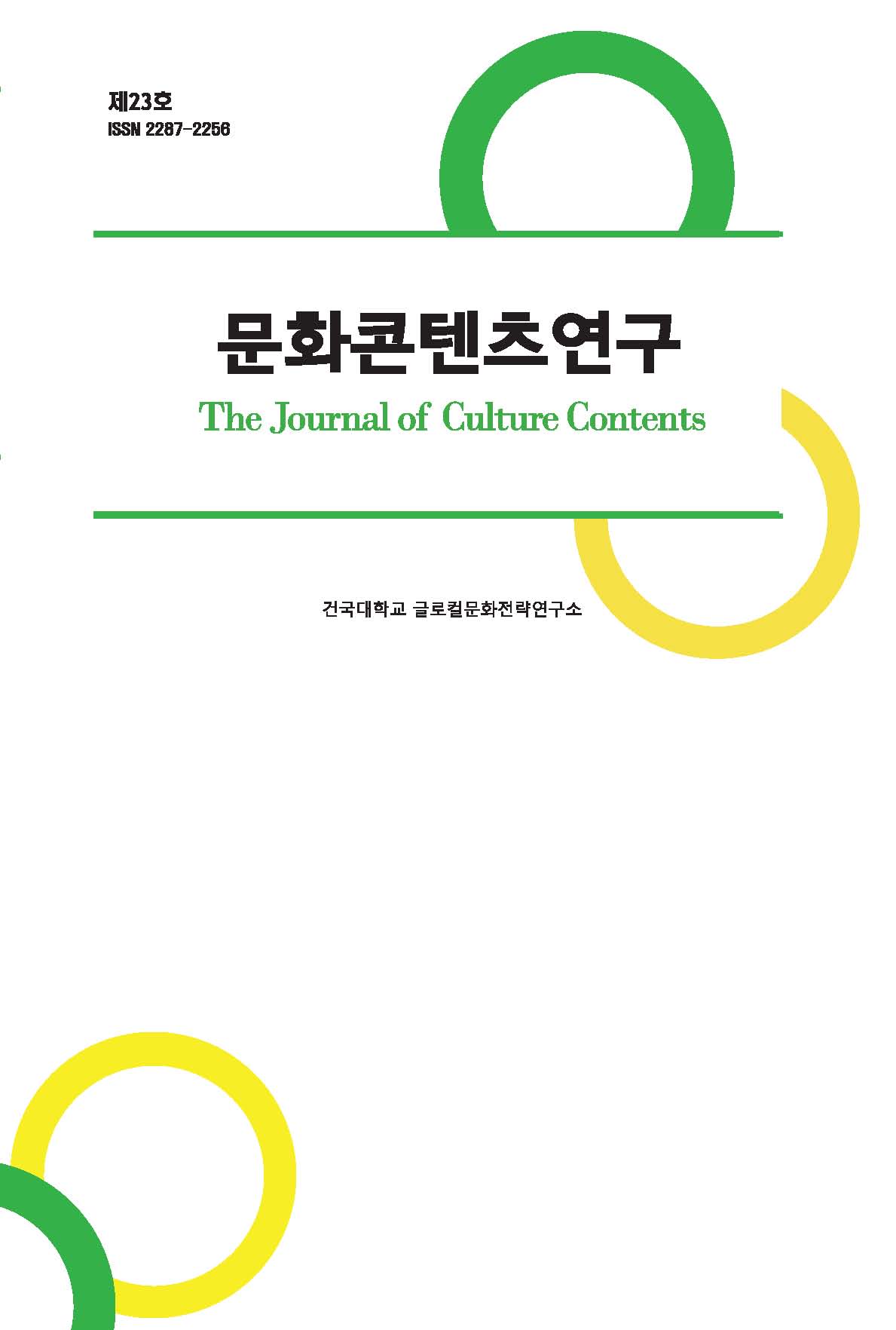Abstract
References
Information
In order to find out how the TV romance drama was able to succeed at the global box office with a Cinderella narrative that has fallen out of the public’s interest in the recently changed content production and viewing environment, this paper analysed the storytelling of focusing on ‘variations in the implementation of clichés’ and ‘the 2030 generation code’. As a result, maintained the cliche that creates the core conflict of romance, but left only the sense of efficacy and omitted the excess of emotion and tearjerker, allowing the events to unfold quickly. In addition, by rearranging the binary opposition elements, the confrontation structure of ‘female protagonist vs. villainess’ was changed to ‘male protagonist vs. villainess’, overcoming the cliché of the conflict and reflecting the increased feminism, and by expanding the target of a rise in status from the heroine to the worker, vicarious satisfaction of the viewers was expanded. Meanwhile, targeting the 2030 generation, created a comical situation using jouissance text techniques that broke the grammar of traditional TV dramas and horizontal communication, and delivered a message about fairness and just compensation pursued by the 2030 generation through realistic representation of emotional labor sites. The storytelling of , which effectively transforms clichés and quickly captures and reflects the changed psychology of the viewers, demonstrates a popular narrative strategy in which familiarity and transformation co-evolve.
최근 달라진 콘텐츠 제작 및 시청 환경에서 TV 로맨스드라마 <킹더랜드>가 어떻게 대중의 관심에서 멀어진 신데렐라 서사로 글로벌 흥행에 성공할 수 있었는지 알아보기 위해 ‘클리셰 구현의 변주’와 ‘2030세대 코드 중심’으로 스토리텔링을 분석했다. 그 결과, <킹더랜드>는 로맨스의 핵심갈등을 만드는 클리셰를 유지하되 효능감만 남기고 감정의 과잉과 신파를 생략해 사건을 빠르게 전개시켰다. 또한 이항대립 요소를 재배치해 ‘여주인공 대 악녀’의 대립 구도를 ‘남주인공 대 악녀’로 바꾸어 갈등의 상투성을 극복하고 신장된 여성주의를 반영했으며 신분 상승의 대상을 여주인공에서부터 노동자까지 확대해 수용자 층의 대리만족 경험을 확장시켰다. 한편 2030세대를 겨냥해 정통 TV드라마의 문법을 깬 쥬이상스 텍스트 기법 및 수평적 소통으로 희극적 상황을 연출했으며 감정노동 현장의 사실적 재현으로 2030세대가 추구하는 공정성과 정당한 보상에 대한 메시지를 전달하고 있다. 클리셰를 효과적으로 변주하고 변화된 수용자 심리를 발 빠르게 포착해 반영한 <킹더랜드>의 스토리텔링은 익숙함과 변형이 공진화한 대중 서사 전략을 보여주고 있다.
- JTBC 드라마 <킹더랜드>, 최롬 극본, 임현욱·최선민 연출, 2023.
- 그림 형제, (Kinder- und Hausmärchen), 김경연, 박은지, 『그림형제 민담집 : 어린이와 가정을 위한 이야기』,현암사, 2012.
- 이영미, 『신데렐라는 없었다』, 서해문집, 2022.
- 대중서사연구회, 『대중서사의 모든 것1. 멜로드라마』, 이론과 실천, 2007.
- 윤석진, 『한국멜로드라마의 근대적 상상력』, 푸른사상, 2004.
- 유지나, 『멜로드라마란 무엇인가 : “자유부인”에서 “접속”까지』, 민음사, 1999.
- 고광열, 『MZ세대 트렌드 코드 : 00년생이 온다! 90년생부터 따라잡아라!』, 밀리언서재, 2021.
- 시모어 채트먼, (Story and Discourse : Narrative Structure in Fiction and Film), 홍재범, 『이야기와 담화 :영화와 소설의 서사 구조』, 호모루덴스, 2019.
- 키스 존스톤, (IMPRO Improvision and The Theatre), 이민아, 『즉흥연기』, 지호, 2000.
- 콜레트 다울링, (Cinderella complex), 이호민, 『신데렐라 콤플렉스』, 나라원, 2002.
- 브루노 베텔하임, (The Uses of Enchantment), 김옥순, 주옥, 『옛이야기의 매력2』, 시공주니어, 1998.
- 이다운, 「한국텔레비전드라마의 대중서사전략에 대한 비판적 고찰」, 충남대학교 대학원 박사학위, 2017.
- 남영숙, 「TV ‘신데렐라’ 드라마 장르 연구」, 이화여자대학교 대학원 석사학위, 2002.
- 손은주, 「신데렐라형 민담의 의미와 역사」, 『뷔히너와 현대문학』 제14권, 한국독일현대문학회, 2000.
- 김흥규·오세정, 「판타지 드라마의 심리적 만족 유형에 대한 연구: <꽃보다 남자> 사례 연구를 중심으로」, 『방송문화연구』 제21권(제1호), 한국방송공사, 2009.
- 최율리,「신데렐라 다시 읽기 : ‘원초적 어머니’와 ‘불가의 소녀’ 여성 원형상을 중심으로」,『스토리앤이미지텔링』 제20집, 건국대학교 스토리앤이미지텔링연구소, 2020.
- 김미라·장윤재, 「웹드라마 콘텐츠의 제작 및 서사 특성에 관한 탐색적 연구」, 『한국언론학보』 제59권(제5호), 한국언론학회, 2015.
- 박순형, 「MZ세대의 특성과 언어 사용 연구」, 『한말연구』제63권(제18호), 한말연구학회, 2022, 1-23쪽.
- 김윤경, 「‘펭수 화법’의 특징 및 의의 탐구- 사회언어학적 담화 분석을 중심으로」,『이화어문논집』제54호, 이화어문학회, 2021.
- 「‘킹더랜드’, ‘서비스직 천재’ 신데렐라가 나타났다 [K콘텐츠의 순간들]」, 『시사인』, 2023년 07월 12일자.
- 「‘민폐 직장인’부터 아랍 왕자까지…‘킹더랜드’의 로맨스가 짓밟은 것들」, 『한국일보』, 2023년 07월 12일자.
- FlixPatrol, https://flixpatrol.com/streaming-services/most-hours-total/netflix/#toc-tv-shows(검색일 2023년 11월 08일)
- Publisher :Research Institute of Creative Contents
- Publisher(Ko) :글로컬문화전략연구소
- Journal Title :The Journal of Culture Contents
- Journal Title(Ko) :문화콘텐츠연구
- Volume : 29
- No :0
- Pages :211-243
- DOI :https://doi.org/10.34227/tjocc.2023..29.211



 The Journal of Culture Contents
The Journal of Culture Contents





